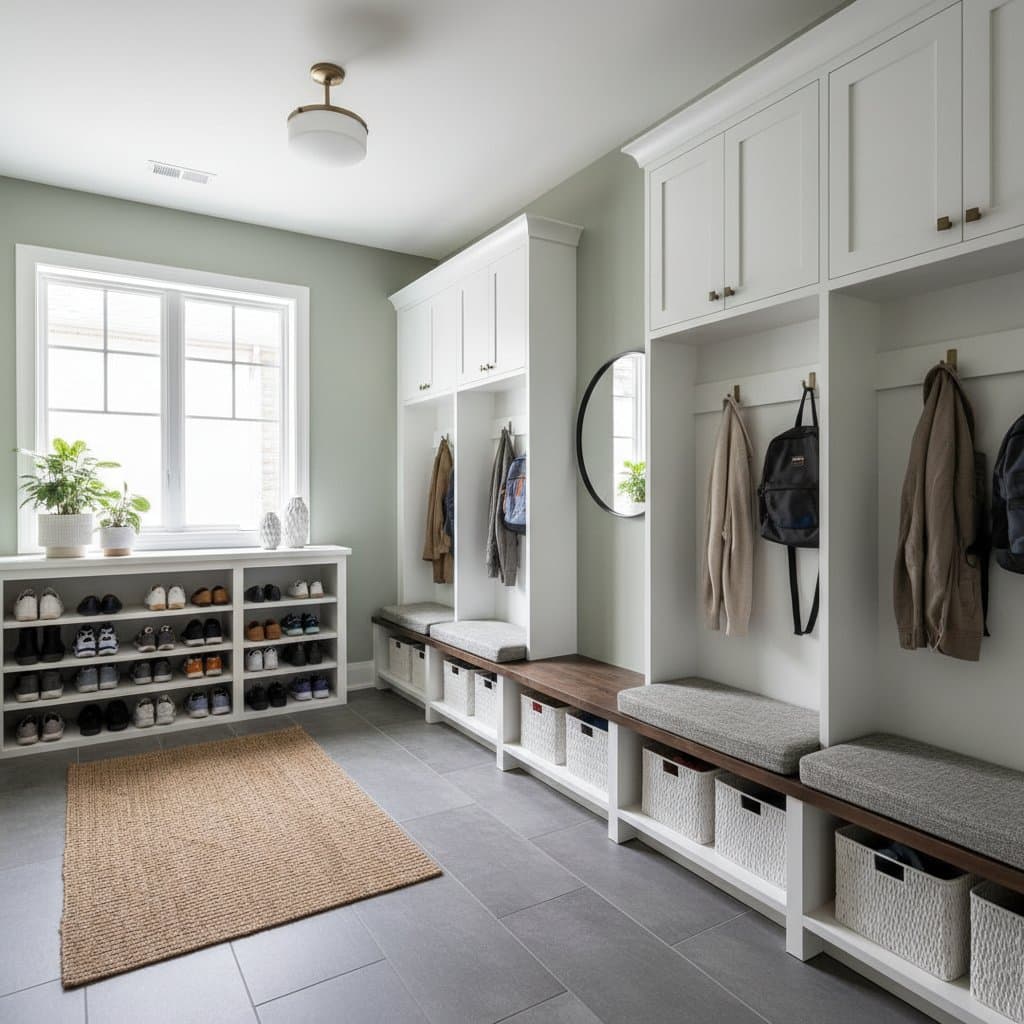Terrazzo Revival: Bold Floors Boosting Home Values
Terrazzo flooring returns with renewed popularity among homeowners seeking vibrant color, varied texture, and increased property value. Previously confined to mid-century public spaces, this material now graces contemporary kitchens, welcoming entryways, and functional bathrooms. It suits residences where artistic flooring pairs with robust performance.
Individuals undertaking renovations or new constructions benefit from terrazzo's permanent, eye-catching surface. Prospective buyers also find value in its ability to elevate home worth through unique finishes that stand apart from standard options.
Pros and Cons
Pros
- Exceptional longevity with limited signs of wear over decades
- Extensive customization in colors and aggregate chip selections
- Seamless installation that minimizes grout lines and reduces cracking risks
- Compatibility with radiant heating systems for added comfort
- Enhancement of overall property value through premium aesthetics
Cons
- Substantial initial expense relative to ceramic or porcelain tile alternatives
- Necessity of skilled professional installation to achieve optimal outcomes
- Firm texture that may feel cool underfoot without underlayment
- Potential slipperiness in wet conditions unless treated with anti-slip additives
- Intricate repair processes for any damage that arises
DIY vs Professional Installation
Terrazzo installation demands precision in mixing, pouring, grinding, and sealing processes. Homeowners typically fare better by engaging certified professionals rather than attempting the task independently.
DIY Considerations
Difficulty Level: Very high, requiring advanced skills in surface preparation and finishing.
Estimated Time: Three to seven days for modest areas, accounting for curing intervals.
Essential Tools: Industrial grinder, heavy-duty mixer, trowels, polishers, and comprehensive safety equipment including respirators.
Primary Risks: Potential for surface cracking, uneven leveling, and inadequate sealing that leads to premature failure.
When to Hire Professionals
Opt for expert installers in scenarios involving expansive or high-traffic areas, intricate pattern integrations, or subfloors with irregularities. Trained specialists ensure even application, compliance with safety codes for slip resistance, and proper curing protocols that guarantee durability.
Step-by-Step Installation Basics
- Thoroughly inspect and mend the subfloor to address any cracks, moisture issues, or instabilities.
- Apply a vapor barrier membrane and position divider strips to define sections and prevent shifting.
- Combine the terrazzo base material with selected chips and binding agents in precise ratios.
- Pour the mixture and level it uniformly using a trowel for consistent thickness.
- Permit full curing, which typically spans 24 to 48 hours depending on environmental conditions.
- Grind the surface progressively with finer grits to achieve a smooth, even plane.
- Apply a grout mixture to fill any remaining pinholes or voids.
- Buff the floor to the preferred level of sheen, from matte to high gloss.
- Seal the finished surface with a penetrating protector to guard against stains and moisture penetration.
During the process, manage cleanup by vacuuming away grinding slurry and wiping down residues prior to the final sealing step.
Maintenance and Lifespan
Properly maintained terrazzo endures for 50 years or longer, resisting daily wear effectively. Regular sweeping removes debris, while weekly damp mopping with a pH-neutral cleaner preserves cleanliness. Reapply sealant every two to three years to maintain protective qualities.
Conduct annual inspections for emerging cracks or areas of dullness. Schedule professional repolishing as needed to revive luster without necessitating full replacement. Reputable installers frequently provide 10-year warranties covering both materials and labor.
Alternatives to Terrazzo
Polished Concrete
This option presents a lower upfront cost and comparable industrial aesthetic, though it offers fewer choices in color and pattern variety. Refinishing proves simpler, allowing periodic updates without major disruption.
Large-Format Porcelain Tile
Visual imitation of terrazzo patterns comes at reduced maintenance demands. However, it falls short in achieving the bespoke designs possible with true terrazzo.
Luxury Vinyl Flooring with Terrazzo Design
Affordable and straightforward to install, this synthetic choice appeals to budget-conscious projects. It sacrifices longevity and the premium resale uplift associated with authentic materials.
Engineered Stone Surfaces
These provide strength and uniformity for flooring applications, yet they lack the artisanal, multifaceted charm inherent to terrazzo compositions.
Local Factors Influencing Terrazzo
Regional climate plays a key role in terrazzo's effectiveness. Humid or coastal environments demand rigorous moisture barriers and enhanced sealing to prevent degradation. Colder climates benefit from integrating radiant heating, which mitigates the material's natural coolness.
Local building regulations differ, with some municipalities mandating slip-resistant treatments in moisture-prone zones like bathrooms. Labor rates fluctuate by location; metropolitan areas boasting experienced terrazzo artisans command higher fees but yield superior craftsmanship and expedited timelines.
Return on Investment and Resale Impact
Properties featuring terrazzo flooring frequently command stronger buyer interest during resale. Prospective owners associate the material with superior workmanship and lasting quality. Real estate professionals note that such distinctive hard surfaces elevate perceived value, particularly in communities that prioritize innovative design.
The exact ROI varies with market conditions, yet terrazzo consistently improves curb appeal and curbs the need for near-term flooring replacements. Over time, its durability translates to meaningful savings on upkeep and renovations.
Safety Considerations
The installation phase generates dust, involves chemical binders, and requires handling heavy machinery. Workers must don respirators, gloves, and protective eyewear throughout preparation and grinding stages. Unsealed floors pose slip hazards; apply anti-slip treatments promptly in high-risk areas.
Verify the subfloor's structural integrity to support the added weight of poured terrazzo. Adhere to permitting requirements for radiant heating additions or subfloor modifications. Select sealers and adhesives certified for low volatile organic compound emissions to safeguard indoor air quality.
Frequently Asked Questions
Does terrazzo present slip risks? Polished surfaces can become slick, especially at high gloss levels. Incorporate grit additives or opt for matte finishes to enhance grip.
Is installation possible over existing tile? Viable in cases of stable, level substrates, though professionals advise full removal for superior adhesion and longevity.
What is the typical installation duration? Compact spaces require approximately one week, inclusive of curing and polishing phases. Expansive projects extend timelines due to sequential grinding and drying stages.
Does terrazzo prone to cracking? Properly prepared installations on stable subfloors resist cracking effectively. Issues often trace back to subfloor movement or inadequate groundwork.
Can damaged terrazzo receive repairs? Repairs suit minor chips through skilled patching and color matching. Extensive harm may necessitate grinding and resealing for seamless restoration.
Securing Your Terrazzo Investment
Terrazzo delivers compelling aesthetics and robust resale advantages through installation by qualified teams. It appeals to those prepared to commit to a durable flooring solution that defines a space for generations. Consult multiple licensed contractors for comprehensive quotes, evaluate aggregate samples in ambient lighting, outline maintenance routines, and review warranty terms. With careful planning, terrazzo integrates seamlessly, becoming an enduring element of architectural distinction.









